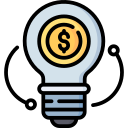Visual Budgeting Tools for Young Adults: See Your Money, Shape Your Future
Chosen theme: Visual Budgeting Tools for Young Adults. Welcome! If numbers blur together, we’ll turn your money into maps, colors, and progress bars you can actually feel proud of. Subscribe for templates, weekly challenges, and real stories from peers.

Why Visual Budgeting Clicks for Young Adults
The brain loves pictures
Our brains process images faster than text, benefiting from dual-coding and the picture superiority effect. Color-coded categories reduce cognitive load, turning messy transactions into patterns you can recognize at a glance and act on confidently.
From overwhelm to one-glance clarity
Visual dashboards condense income, bills, and goals into a single scene. When rent, food, and fun money each have colors and limits, decisions get simpler. Tell us: which visual cue instantly makes your finances feel manageable?
Gamified progress that sustains habits
Progress bars, streaks, and milestones can keep motivation alive through boring weeks. The key is meaningful metrics, not empty confetti. Try a weekly streak for updates, and comment if a visible streak ever stopped you from splurging.

App dashboards that automate the boring
Bank-connected apps categorize transactions, visualize cash flow, and surface trends automatically. Look for clear category limits, calendar billing views, and privacy controls. If you’ve tried one recently, share what its best visual feature was for you.

Spreadsheet templates with visual flair
Google Sheets or Excel can shine with conditional formatting, color scales, and sparklines. Build a monthly overview tab and a goals tab. Add a simple traffic-light rule so overspending literally turns red, demanding attention without nagging.
Build a Visual Budget in 60 Minutes
Map your inflows and anchors
List paychecks, financial aid, and side gig income. Identify anchors: rent, transport, groceries, and subscriptions. Anchors stabilize your plan, so visualize them first with bold colors or icons that stand out on every page or screen.
Turn categories into color-coded lanes
Group expenses into lanes like Essentials, Growth, and Fun. Assign each a color, monthly limit, and emoji. Build a simple pie or stacked bar so you can see where money actually lands, not just where you hoped it would.
Create a weekly snapshot ritual
Pick a day, set a 15-minute timer, and update your visuals. Compare planned versus actual, then adjust. Reward yourself with a small ritual—tea, playlist, or a friend check-in—and post your progress bar screenshot in our community thread.
Goals You Can See and Touch
Draw or generate a thermometer for emergencies or travel. Shade each $50 or $100. That satisfying fill-in moment matters. Print it, tape it near your desk, and share monthly photos to keep yourself publicly accountable and energized.
Goals You Can See and Touch
Create digital or paper cards for categories like textbooks, gifts, and car maintenance. Move cards across columns—Planned, Funded, Spent—to visualize cycles. This kanban-style flow reduces surprises and turns irregular costs into routine commitments.


Taming Subscriptions and Debt with Visibility
Subscription calendar view
List every subscription with cost, date, and purpose. Place each on a monthly calendar and color by priority. Seeing three renewals in one week prompts a quick prune. Comment with your biggest surprise after mapping them visually.
Debt payoff mountain or snowball chart
Stack debts from smallest to largest, then plot a descending mountain as balances fall. Celebrate each peak you flatten. Visual momentum makes extra payments exciting, not painful, especially when you post before-and-after charts monthly.
Automation meets transparency
Set automatic transfers to goals, but keep a clear dashboard. Automation handles discipline; visuals handle trust. If a rule fires, you should immediately see its effect on bars and charts, preventing confusion and reinforcing your plan.
True Story: The Kanban Budget That Saved a Semester
Jordan, 19, kept overdrafting despite careful intentions. They built three columns—To Budget, Allocated, Spent—and moved colored cards weekly. By midterm, overdrafts were gone, and savings finally existed. Jordan swears the columns felt like training wheels.

Stay Motivated, Stay Safe

Avoid posting account numbers, locations, or exact balances. Blur screenshots, use nicknames for accounts, and prefer tools with local export options. Your dashboard should empower you without leaking personal details—share wisely, celebrate thoughtfully, remain secure.
